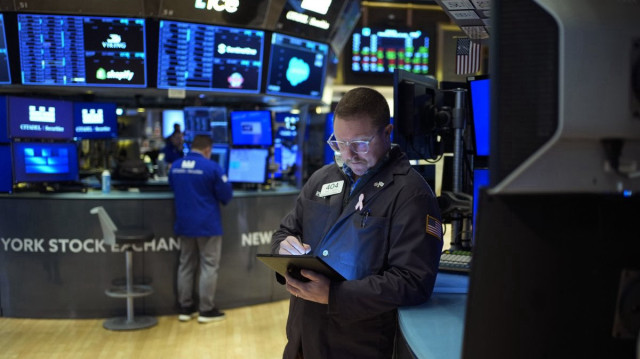
World is heading towards a trade framework with highest average tariffs in last 30 years, UNCTAD secretary general says, warning ‘that in itself is a major shift’
The bigger impacts of US tariffs on the global economy and trade are yet to unfold but will be felt next year when "everything will be already done," but the least developed countries are among those facing major risks from increasing tariffs, warned Rebeca Grynspan, Secretary-General of the United Nations Trade and Development (UNCTAD), in an exclusive interview with Anadolu.
The deadline for extension for the US reciprocal tariffs expired on Aug. 1 after a period of 120 days.
Despite expectations that the US would strike more trade agreements during the extension period, it has only signed trade deals with the UK, the European Union, Japan, Vietnam, Indonesia, the Philippines and South Korea, with all having different conditions and rates. Negotiations for a trade deal with China remain ongoing.
However the US made changes to the level of reciprocal tariffs compared to those announced on the Liberation Day, April 2. The updated duties range from 10% to 41%.
"There is no doubt that we are heading towards a trade framework that will have the highest average of tariffs in the last 30 years," Grynspan noted.
Most nations received tariff rates between 15%-30%, but Iraq (35%), Laos (40%), Myanmar (40%), Switzerland (39%) and Syria (41%) were each tagged with higher rates.
Cambodia and Bangladesh saw a rate of 19% and 20%, respectively.
A separate order signed by Trump will increase the tariff rate on Canada from 25% to 35% on Aug. 1.
Trump postponed higher tariffs on Mexico at the last minute as both countries plan to continue negotiations for a trade deal in the coming days.
The US has not reached new trade agreements with several key trading partners including Canada, India and Australia despite the extension period.
According to Grynspan, the impact of this changing trade scenario has brought "a very high level of uncertainty" to the global economy, especially in investment and trade, as it is difficult to forecast what the "final map" of the tariffs will be.
She noted that this rise in uncertainty over tariff structures is already affecting global trade and investment dynamics with investors waiting to see how the "trade panorama" evolves due to the tariffs.
However, despite a modest 1% increase in global trade in the first half of this year, UNCTAD has adjusted its full-year growth forecast from 2.3% to 2.5%. But Grynspan stresses this reflects delayed effects of the tariffs.
"Part of this is that not all the measures have entered into the economy already. It depends how the announcements that we are hearing will enter the economy. It will take time for the measures to enter, and I predict that a bigger impact will be felt next year, when everything will be already done," she said.
She said what concerns her most is the unequal burden of these tariffs, especially on the least developed countries.
"As things are right now, the least developed countries will end up having higher tariffs than the developed countries, and so their comparative advantage will be even less than it is today. They could be very affected," she said.
Grynspan warned that some countries could see exports to the US fall by as much as 50%-60%.
For African economies, the situation is even more pressing due to the potential loss of AGOA benefits. The African Growth and Opportunity Act (AGOA) is a trade agreement providing eligible sub-Saharan African countries preferential access to the US market.
"That was something that really helped the African countries to develop their more industrialized or manufacturing sectors. So they are losing the preferential access and they are having much higher tariffs, even compared to competitors. We are very worried that these countries will be heavily affected by this cascading effect of losing preferential access on the one hand and having very high tariffs imposed on their goods on the other hand," Grynspan said.
According to UNCTAD figures, a total of 46 least developed countries account for just 1.7% of the US trade deficit which Trump wants to close by imposing higher tariffs on countries.
It does not make sense to complicate the system for such a small share, she said, calling for these countries to be exempt from the high reciprocal tariffs.
"Trade is not a development strategy on its own, but it is part of development. However, its disruption always hits the most vulnerable the hardest," Grynspan noted, raising concern over the effects of tariffs on the least developed and developing countries.







